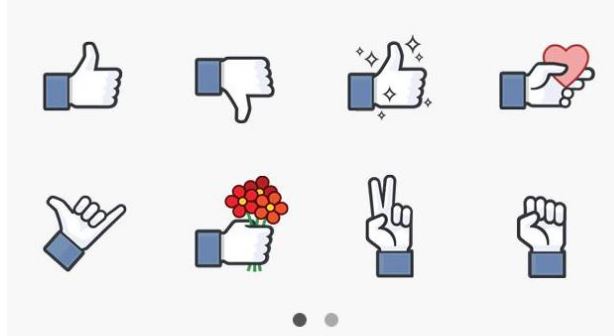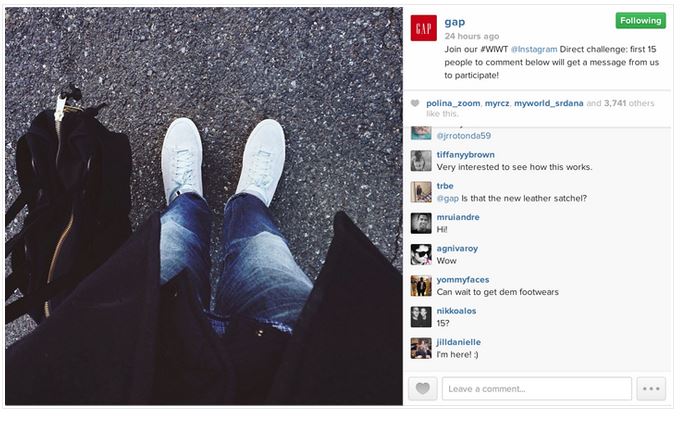Social media platforms are constantly tweaking their layout, terms of services, or features. This HEM series is meant to help you make sense of these changes in a higher ed context to better leverage them for your college’s social media marketing strategy.
Facebook (sort of) Dislike button
Facebook is continuously bringing changes to remain relevant to a changing social media landscape. Users have been asking for a Dislike button for almost as long as the platform has been around. Has Facebook finally given up its focus on positive? Not really. This is not really a button that can be used on pages and profiles, but an emoticon that will remain available only on Facebook Messenger for now. We do not know if Facebook has plans of creating a Dislike button in the future, but the company has revealed that it is very interested in knowing what people do not like about the content that is shared. That is one of the reasons why Facebook collects all content that is typed on the social network, even if it is not actually published or sent.

Facebook New Ads format
Facebook has announced this week that it is testing « richer storytelling format » for ads. In other words, Facebook will enable auto-played video ads on newsfeed. Video ads will be about 15-second long and they will start playing as soon as they appear on the screen, but in order to hear what is said in the video, users will have to turn on the sound.
Facebook hopes this new feature may engage more people since they won’t have to click on the content. Also, at the end of the video, two additional videos from the same marketer will be featured for the targeted audience to listen to if they wish. For mobile users, smartphones or tablets, the advertisements will be preloaded only when a device is connected to wireless internet. They will not use data plans and won’t work through cellular network.
With this new feature, Facebook is clearly hoping to attract more marketers to its platform. Based on tests, Facebook reports that this new way of seeing videos on Newsfeeds should increase engagement by 10% (watching, liking, sharing, and commenting). No price plan has been disclosed yet.
What it may mean for your school: A short video on a social media platform… Sounds familiar? Very much like Twitter Vine or Instagram, isn’t it? Does it mean you should start investing more into these short videos? Yes. Videos should definitely be part of your college’s content strategy. They could also be a great way to leverage your authentic voice with student-generated content. Should you use short videos as a marketing tool on Facebook? We believe nothing will beat the “organic” spread of a good, short, entertaining video. But here is definitely some news that should interest all marketers in higher education.
Facebook Real-time data
Facebook has also been working on helping page admins have a better picture of what is happening to their page. The company has made two important changes to its page. Stats are now showing real-time data: page insights now display metrics such as overview, reach, posts and likes in real-time. Also, although some people have reported that they have not been able to access such info, Facebook now allows page admins to access info since July 2011 without having to export stats
What it may mean for your school: Your team will now be able to track the impact of a specific piece of content being shared on Facebook in real-time. The opening of the stats all the way back to July 2011 will allow you to compare your results to other years at the same moment.
Instagram Direct
This year, Instagram has also added some new features to keep up with the competition of platforms such Whatsapp (which has grown to boast 350 million active users worldwide) or Snapchat (which just rejected a $3bn takeover offer from Facebook). Instagram recently launched “Instagram Direct”, a new feature that allows users to send pictures or videos to individuals they follow or a group (up to 15 people) without it appearing to other users. If the user doesn’t follow the individual(s), they can still send pictures and videos, but the recipient has to agree to view it before the content is displayed.
What this could mean for your school: Many are questioning whether or not Instagram Direct will survive. They argue that such a drastic move from public sharing to private sharing is not aligned with the way people use the app, and may be detrimental for the Instagram brand down the road. Instagram Direct was just recently launched, so it is hard to tell how well it will do. The feature is brand new, but some marketers have already taken advantage and found a new way to create a special connection with the most engaged customers. Some use it to create very on-the-spot, “the first 20 people”-type of contests. See what Gap is doing:

Have you been using these new features? Which one would you say is the most useful to your team?





